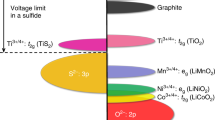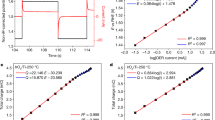Abstract
IT is not generally appreciated how our way of life is influenced by the cathodic reduction of oxygen. Because of the sluggish character of that reduction, metallic corrosion is usually a slow process; that is the reason why iron, the cheapest of metals, can be used at all. Other consequences of the sluggishness are less welcome; it makes the area of the cathodes needed for fuel cells inconveniently large. Thus, despite the fact that a fuel cell might obtain twice as much electric energy from the same amount of fuel as a system based on a heat engine (whether the fuel be coal, oil or gas), fuel cells are not used at power stations because of the high capital cost. In situations in which the capital cost is high due to other causes, a fuel cell works well; the Bacon cell1, developed at Cambridge and modified in the United States, is to be used in the Apollo spacecraft. The whole situation of domestic power production might be changed overnight if a means were discovered to accelerate the reaction O2 + 4e + 2H2O = 4OH−.
This is a preview of subscription content, access via your institution
Access options
Subscribe to this journal
Receive 51 print issues and online access
$199.00 per year
only $3.90 per issue
Buy this article
- Purchase on Springer Link
- Instant access to full article PDF
Prices may be subject to local taxes which are calculated during checkout
Similar content being viewed by others
References
Bacon, F. T., Nature, 186, 589 (1960); J. Inst. Fuel., 406 (Sept. 1965). See also Adams, A. M., Bacon, F. T., and Watson, R. G. W., in Fuel Cells (edit. by Mitchell, W.), chap. 4 (Academic Press, 1963).
Gnanumuthu, D. S., and Petrocelli, J. V., J. Electrochem. Soc., 114, 1036 (1967).
Maget, N. J. R., and Roethlein, R., J. Electrochem. Soc., 112, 1034 (1965).
Hersch, P., Nature, 180, 1407 (1957).
Evans, U. R., J. Chem. Soc., 111 (1929).
Rockett, J. A., and Brown, R., J. Electrochem. Soc., 113, 207 (1966).
Beltzer, M., J. Electrochem. Soc., 114, 1200 (1967).
Author information
Authors and Affiliations
Rights and permissions
About this article
Cite this article
EVANS, U. Cathodic Reduction of Oxygen in Fuel Cells and Corrosion Cells. Nature 218, 602–603 (1968). https://doi.org/10.1038/218602a0
Received:
Published:
Issue Date:
DOI: https://doi.org/10.1038/218602a0
This article is cited by
-
Nanostructured electrocatalysts with tunable activity and selectivity
Nature Reviews Materials (2016)
-
Oxygen Electrocatalysis on Dealloyed Pt Nanocatalysts
Topics in Catalysis (2016)
-
Small palladium islands embedded in palladium–tungsten bimetallic nanoparticles form catalytic hotspots for oxygen reduction
Nature Communications (2014)
-
A Joint Pseudo-splitting/Peroxide Mechanism for Oxygen Reduction at Fuel Cell Cathodes
Nature (1969)
Comments
By submitting a comment you agree to abide by our Terms and Community Guidelines. If you find something abusive or that does not comply with our terms or guidelines please flag it as inappropriate.



